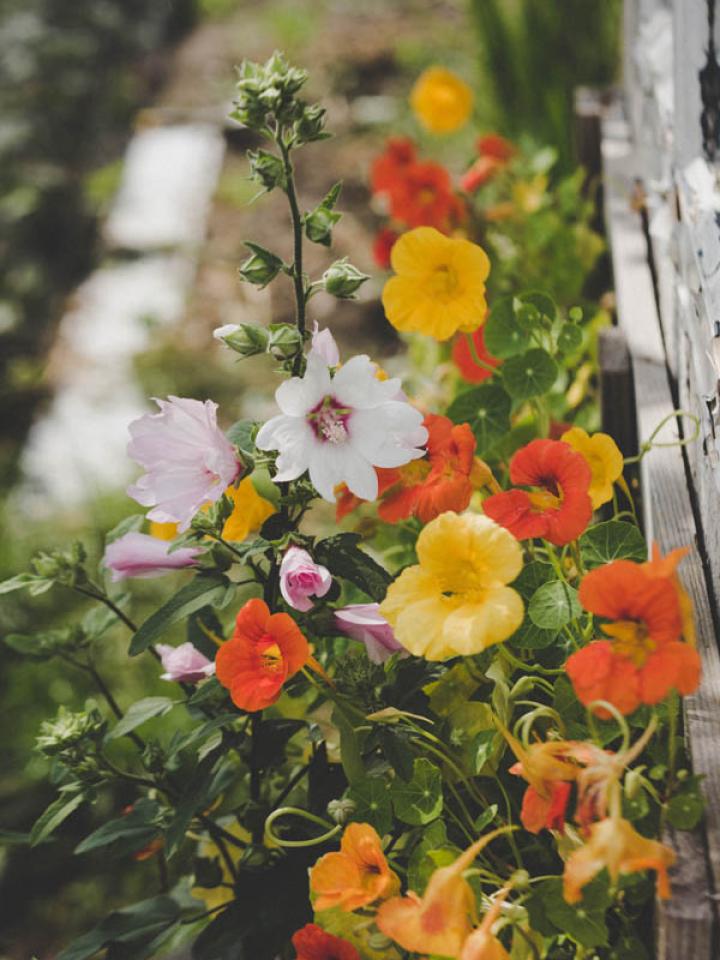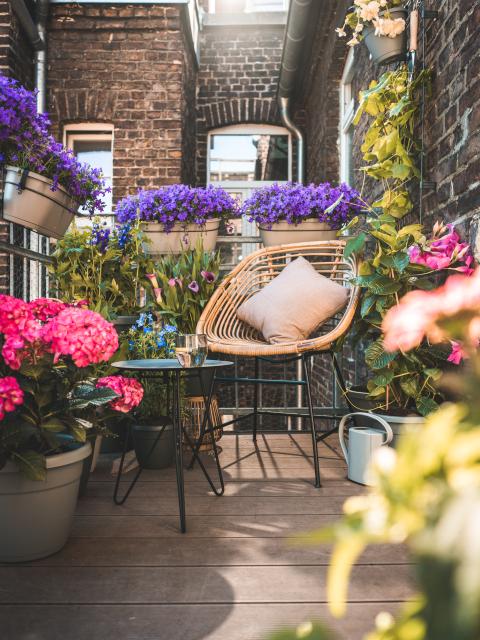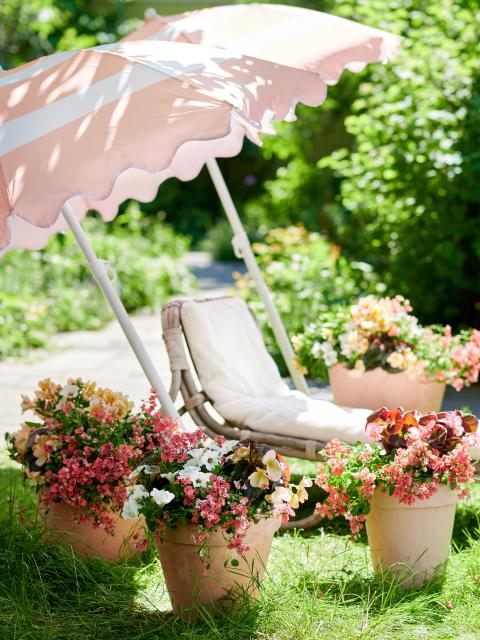Colours and shapes
Nasturtium, also known as Tropaeolum, is an annual garden plant with pretty funnel-shaped flowers that come in shades of orange, yellow and red. The flowers have a spicy, fragrant taste, while the leaves are more peppery and the immature green seeds are firy like a radish. The plant is filled with vitamin C, making it a healthy choice, as well as a tasty, dainty one.
When growing Nasturtium, think about how you'd like the plant to look, as well as what it will taste like. The Tropaeolum majus variety is a large, climbing plant, while Tropaeolum minus is more compact, fitting neatly in a pot on your balcony, next to your microgreens. Look after them though, the flowers attract bees, yes — but also aphids and caterpillars, anxious for a tasty snack.
Origin
Nasturtiums hail from Argentina, Peru and Bolivia. The Incas historically used the plant for its medicinal properties, and sailors brought the plant to Europe in the 17th century.
Trivia
- The great Swedish botanist Carl Linnaeus named the plant Tropaeolum, after the Greek word tropaion, meaning trophy. He thought the smooth, grey-green leaves resembled the shields that Greeks hung in a tree after battle as a trophy of victory.
- Nasturtium has a strong antiseptic properties, which is why the Incas used it as a medicinal herb.







